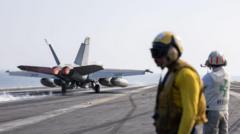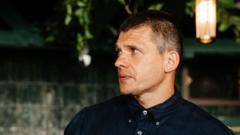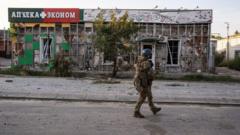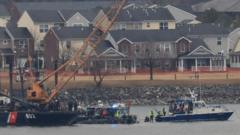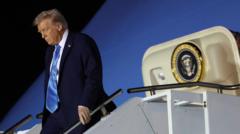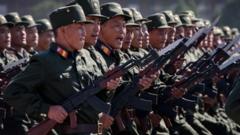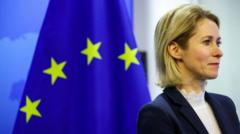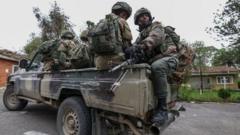In a significant development in the ongoing Russia-Ukraine conflict, Russian forces have advanced within a mere three miles of the strategic city of Pokrovsk, a critical juncture for Ukraine's military infrastructure. This surge of military action has raised alarms among Ukrainian officials, leading to calls for unconventional defense measures as combat intensifies in the region.
Russian Forces Closing in on Key Ukrainian City of Pokrovsk

Russian Forces Closing in on Key Ukrainian City of Pokrovsk
Tensions escalate as Russian troops near a vital transit hub in Ukraine, prompting urgent military strategies from Ukrainian command.
On Thursday, General Oleksandr Syrsky, Ukraine’s Chief of General Staff, acknowledged the fierce nature of the ongoing battles as Russian troops made rapid advances in the eastern Donetsk region. While the general refrained from detailing specific tactical shifts, his statements highlighted the pressing need for adaptations amid heavy fighting close to Pokrovsk, a city renowned for its vital rail and road connections.
Recent satellite imagery and battlefield reports indicate that Russian units have maneuvered southward in an attempt to encircle Pokrovsk, thereby jeopardizing Ukraine's remaining strongholds in the southern sector of Donetsk. As Russian forces continue to push through adjacent villages, the urgency for reinforcement and innovation in Ukrainian defense tactics grows.
Analysts remark on the startling pace of Russia's territorial gains, with estimates suggesting that they have reclaimed over 600 square miles of land in less than three months—roughly double the area of New York City. This rapid advance is attributed to Russia's substantial manpower advantage, compounded by the operational strains faced by Ukrainian forces due to personnel shortages.
Military experts, like Emil Kastehelmi from the Black Bird Group, opine that the current offensive is strategically timed, as Moscow seeks to consolidate its territorial acquisitions before the impending inauguration of President-elect Donald J. Trump. Analysts anticipate that the new U.S. administration may seek negotiations that could potentially favor Russia's gains on the battlefield.
As the situation continues to evolve, the stakes remain high for Ukraine, with the fate of Pokrovsk becoming increasingly critical in the broader context of the conflict. The international community watches closely as the next phase of this war unfolds, raising concerns over the implications of a changing balance of power in Eastern Europe.
Recent satellite imagery and battlefield reports indicate that Russian units have maneuvered southward in an attempt to encircle Pokrovsk, thereby jeopardizing Ukraine's remaining strongholds in the southern sector of Donetsk. As Russian forces continue to push through adjacent villages, the urgency for reinforcement and innovation in Ukrainian defense tactics grows.
Analysts remark on the startling pace of Russia's territorial gains, with estimates suggesting that they have reclaimed over 600 square miles of land in less than three months—roughly double the area of New York City. This rapid advance is attributed to Russia's substantial manpower advantage, compounded by the operational strains faced by Ukrainian forces due to personnel shortages.
Military experts, like Emil Kastehelmi from the Black Bird Group, opine that the current offensive is strategically timed, as Moscow seeks to consolidate its territorial acquisitions before the impending inauguration of President-elect Donald J. Trump. Analysts anticipate that the new U.S. administration may seek negotiations that could potentially favor Russia's gains on the battlefield.
As the situation continues to evolve, the stakes remain high for Ukraine, with the fate of Pokrovsk becoming increasingly critical in the broader context of the conflict. The international community watches closely as the next phase of this war unfolds, raising concerns over the implications of a changing balance of power in Eastern Europe.




